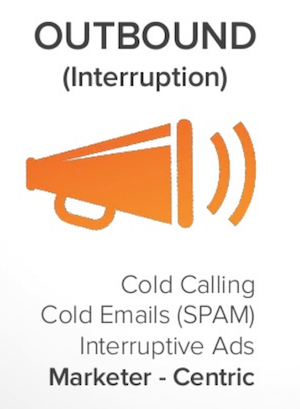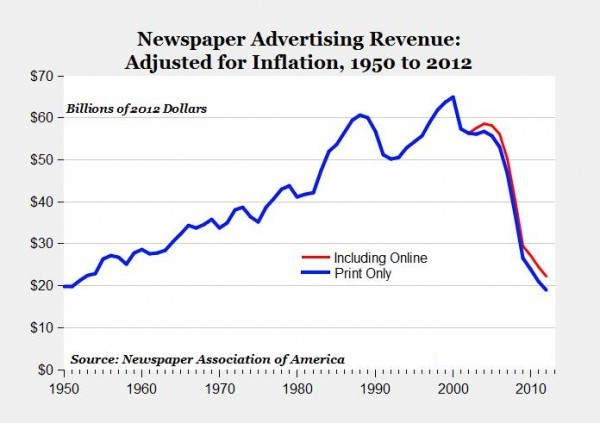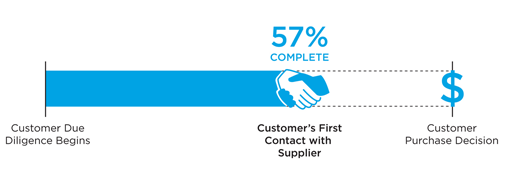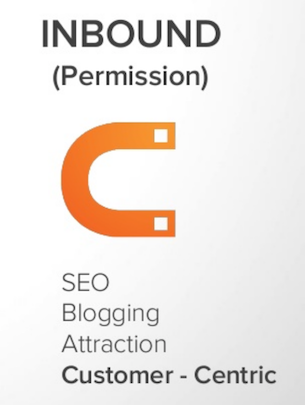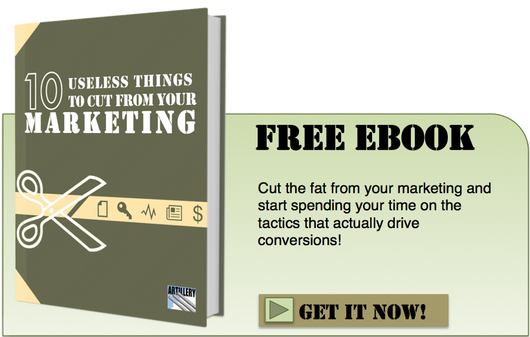Inbound marketing is gaining strength because of the changing ways people buy. But it will not eliminate the need for outbound marketing.

There’s a perception of inbound marketing that it is at odds with outbound marketing: That companies who adopt inbound marketing won’t have to do to outbound marketing. Nothing could be further from the truth.
It brings to mind the notion of a kitchen freezer and a microwave. They’re very different appliances. But they work beautifully together.
When radio was first introduced in the 1920s, “experts” predicted that it would replace newspapers. Later, in the 1950s there were many who predicted TV would replace radio.
None of that happened. Instead, companies took advantage of the strengths of each medium to refine their marketing strategies. They still do.
Similarly, the notion that inbound marketing might replace outbound marketing is equally unfounded.
A contributing factor to the inbound vs. outbound rivalry is that inbound marketing is often explained in comparison to outbound marketing. Here’s how Wikipedia defines it:
Inbound marketing is promoting a company through blogs, podcasts, video, eBooks, enewsletters, whitepapers, SEO, social media marketing, and other forms of content marketing which serve to bring customers in closer to the brand, where they want to be.
In contrast, buying attention, cold-calling, direct paper mail, radio, TV advertisements, sales flyers, spam, telemarketing and traditional advertising are considered “outbound marketing.”
Inbound marketing refers to marketing activities that bring visitors in, rather than marketers having to go out to get prospect’s attention. Inbound marketing earns the attention of customers, makes the company easy to be found and draws customers to the website by producing interesting content.
Outbound Marketing
For most of the 20th Century, the outbound approach was the undisputed champion of the marketing world. Think of outbound marketing as a megaphone: Loud and overpowering.
At its core was the notion of interruption. You could interrupt a radio or television broadcast, make cold calls, send direct mail and even blast unwanted emails to prospective customers.
But several technological and legislative developments weakened the longstanding power of outbound marketing.
People have always hated being marketed to, and in recent years they have been able to tune out more and more unwanted marketing messages.
These days, consumers can avoid a lot more marketing messages than before. For that we can thank DVRs, satellite radio, MP3 players, Caller ID, Do Not Call Lists, Do Not Mail Lists, CAN-SPAM legislation, Internet ad pop up blockers and RSS readers.
And the trends for outbound marketing are not good:
- 86% of the population skips TV ads
- 91% have unsubscribed from email lists
- 44% of direct mail is never opened
- Over 200 million phone numbers are on the Do Not Call List
Newspaper revenues in 2012 dropped to 1950 levels. And they’re not coming back.
And if you know any advertising or promotion managers still employed, congratulate them: From 2002-2012 that job category had the largest decrease (-65%) of any tracked by the Bureau of Labor Statistics. Even more than textile workers.
The Way People Buy Has Changed
While outbound marketing’s effectiveness has been thwarted by marketing message avoidance technology (and legislation), the Internet has changed the way people buy.
In years past, when a buyer was researching a purchase, they had to contact the seller in order to learn about the product, pricing, options, guarantees, etc. For instance, when someone wanted to buy a car they had to make a trip to the dealership to get most of the information. At that point, the sales person could influence the sales process since they had the leverage of information.
Now, thanks to the Internet, buyers can research the product without having to first go to the seller. Before visiting a dealership, the car buyer can research what options are available, the selling price (and the dealer’s price), reviews, safety data, etc. The buyer can also use social media to get the opinion of friends and even strangers.
In a B2B buying situation, a study by the Corporate Executive Board found that buyers are now 57%-70% through their purchase before they first contact the seller.
The most important takeaway for marketers: the buyer is now in control. And this has lead to the new champion of the marketing world: inbound marketing.
Inbound Marketing
With consumers’ ability to avoid unwanted marketing messages and their preference for doing their own product research, marketers have had to insinuate themselves into the new buying model. That’s where the visual of a big magnet to represent attracting the interest of buyers comes to mind.
In a nutshell, inbound marketing is about getting found online, converting a visitor to a lead, and then measuring, analyzing and iterating to refine the process and improve the results.
Marketers are publishing useful, helpful and even entertaining content about solutions to the problems for which their prospective customers are searching online. Keyword research and SEO are a part of this and blogging is the primary method of publishing the information. Social media is used to help spread their content and attract more traffic.
Once on a site, a visitor is offered something valuable related to their research (like an ebook) in return for their email address and contact information.
Now with permission granted, the marketer continues to offer helpful information via email on a regular basis to the prospective customer. If there’s a fit, the prospect takes the marketers “digital hand” as they are guided through their buying experience.
How are they guided through the buying process? Primarily with two things:
- Content – A continuous stream of helpful content that fills the requirements of their buying research.
- Context – The right content has to be provided at the right time. For instance, after a lead converts, they are more likely to next want information about your company before getting a price quote or product demo.
Does it work? According to HubSpot’s annual State of Inbound Marketing Report, companies who are increasing their inbound marketing budgets are enjoying a lower cost per lead, shortening their sales cycles and increasing their sales close rates.
Outbound Marketing Is Not Going Away
One of the popular misconceptions about inbound marketing is that it can replace outbound marketing. It can’t – there will always be a role for outbound marketing tactics.
An example of outbound marketing working well with inbound marketing is American Express. Their advertising targeting small business owners is not about signing up for corporate credit cards, but rather urging them to visit their Open Forum website for valuable resources and advice on running a business. Once on the site, visitors can consume information and sign up for additional free resources. Then, the relationship deepens and the sales magic takes place.
